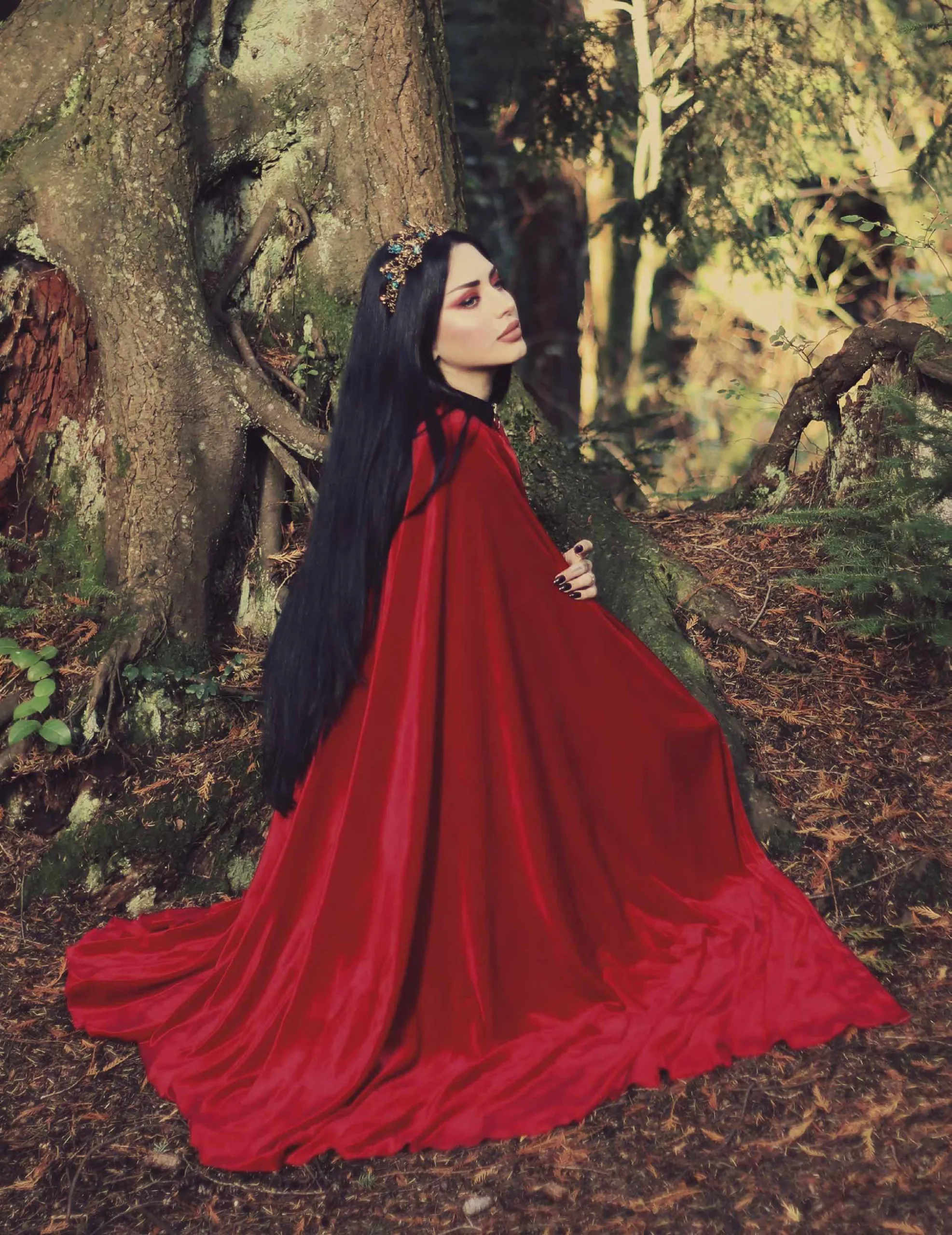Photography by
ROYA DIAR
Model: Mahafsoun Cape: Costurero Real
Back up a bit (again). We’ve returned to the Middle Ages, and black underwear does not exist yet.
Olde-tyme underthings were white, or at least off-white, for the same reason that restaurants drape their tables in white linens: White may show the dirt, but it can also be bleached. White is, in its own way, a practical non-color.
Incidentally, lace, veils, and chemises weren’t always colorless. We see them that way in paintings because (it is now believed) the artworks’ conservators cleaned them almost as vigorously as a medieval laundress might scrub her employer’s chemise. Wardrobe inventories list chemises and laces in various colors; they were probably so delicate as to look pale when painted, then were made paler by restoration.
If you even had your portrait painted, you were definitely rich. You were probably also on the cusp of one of the two significant events in a woman’s life: her marriage and her death. For the first purpose, you beckoned the future in your most magnificent jewels (a garnet choker!) and colorful clothes. You were lovely, you were fecund, you were ready to be rich. For the other event—well, if you were old, you were probably sitting in the background of a group portrait and petting a dog.
At your wedding, you wore your most resplendent things and staggered under the weight of your colorful wealth. Bleachable white as the color
of special days and weddings is a fairly recent innovation. Back in the day, it was the color of mourning. During the Renaissance, for example, the French royal court instituted a custom called la reine blanche: After the death of the king, his consort withdrew to her chamber and wore nothing but white for forty days (long enough to determine whether or not she was pregnant). The rest of the court was in black. Just think how difficult it would have been for a reine blanche to escape, flitting like a ghost through the darkness.
A white wedding dress was a shocker, as when fifteen-year-old Mary, Queen of Scots, put one on to marry the French dauphin in 1558. Her gown was accented in multicolored jewels, but people thought she could have tried to look a bit more festive. They didn’t know yet that she would spend most of her life wearing black and white for mourning. All three of her husbands died, and in her best-known portrait, she wears a long white mourning veil over the top half of a body swathed in black.
Mary’s signature color changed in 1587, when Queen Elizabeth finally put her tiresome cousin and longtime prisoner to death. Mary climbed
onto the dais in her usual jet-black ensemble, then asked the executioner for permission to remove it. She turned out to be dressed entirely in crimson beneath, from sleeves to petticoat. Red, the color of Catholic martyrdom, was an eloquent In your face! to the Protestant who’d ordered her death.
Red is an excellent gothic color.



































